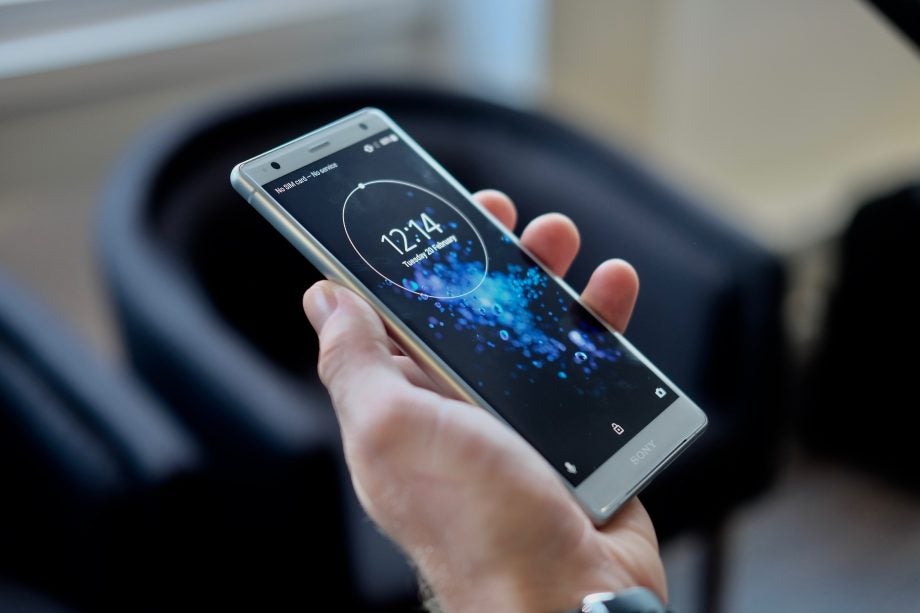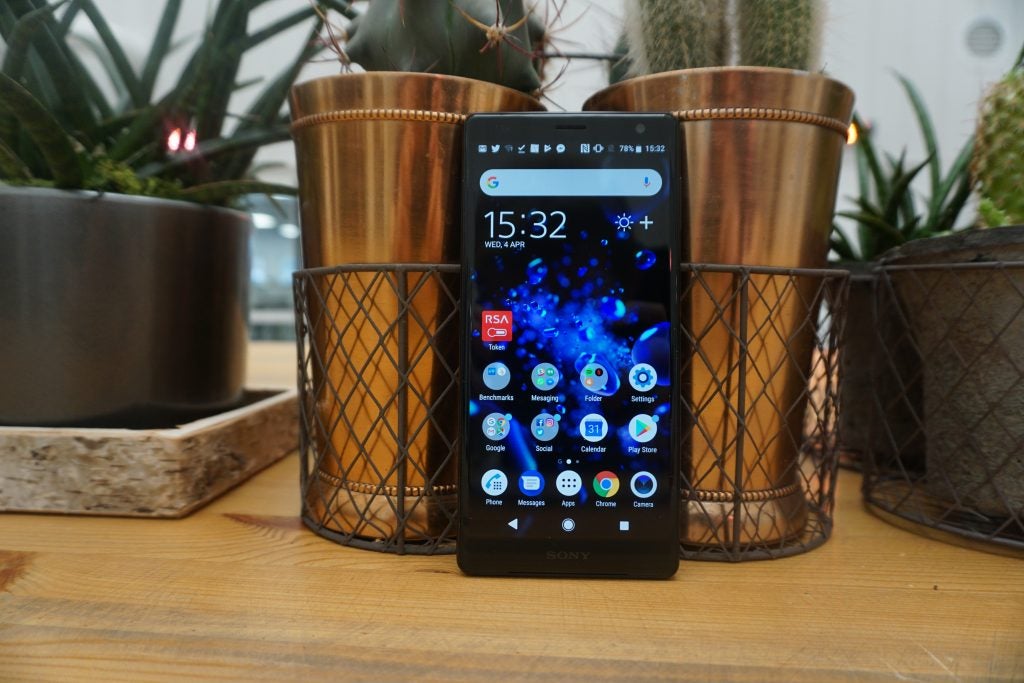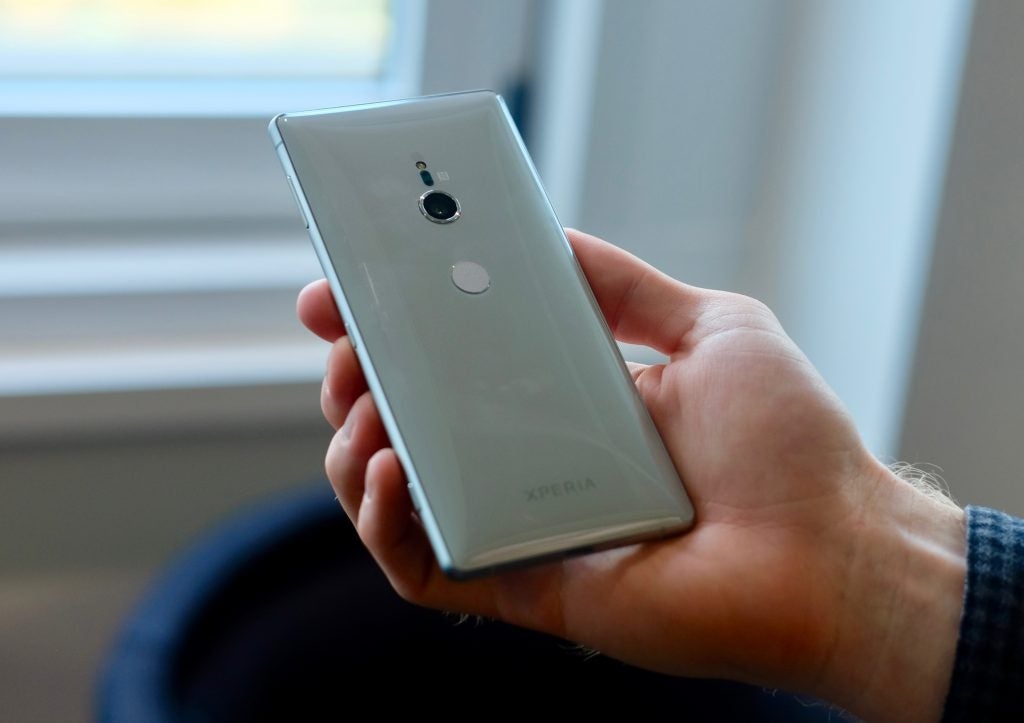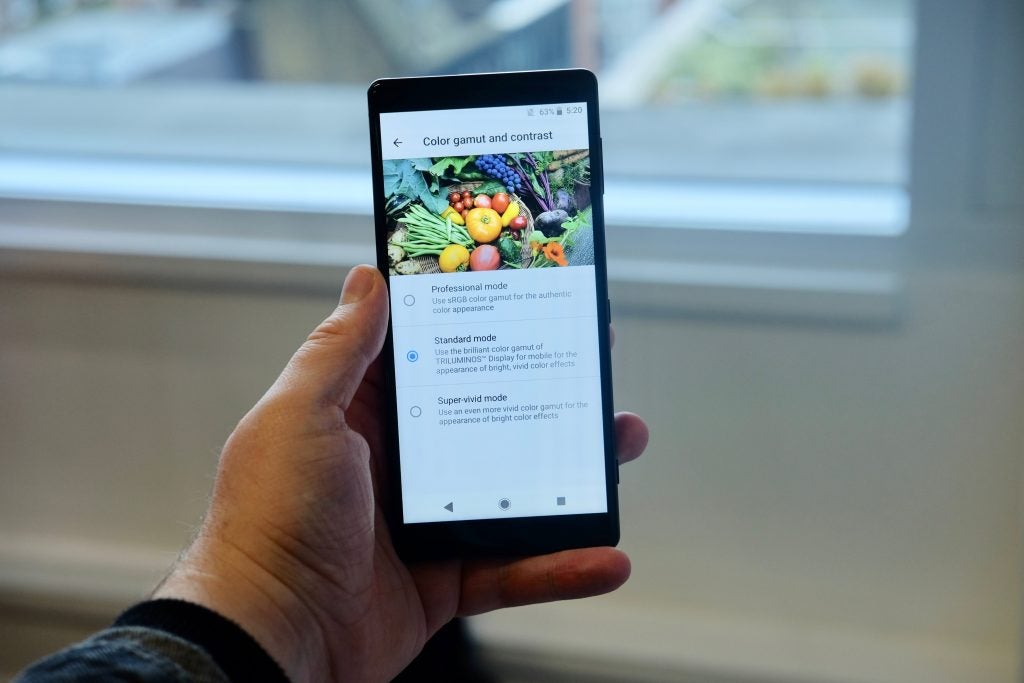Sony Xperia XZ2 Review
Sony Xperia XZ2
Good, but not the return to form we hoped for

Sections
- Page 1 Sony Xperia XZ2 Review
- Page 2 Software and performance Review
- Page 3 Camera Review
- Page 4 Battery and conclusion Review
Verdict
Pros
- Pretty design
- Solid performance
- Powerful speakers
Cons
- Camera not as good as rivals
- Lots of duplicate apps
Key Specifications
- Review Price: £699
- 5.7-inch FHD HDR 18:9 display
- 3180 mAh battery
- Qi wireless charging
- Snapdragon 845
- 4GB RAM / 64GB storage
- 19-megapixel camera
- 4K HDR recording
- 960fps slow-mo capture
- Sony Dynamic Vibration System
- LDAC
- Surround sound
What is the Sony Xperia XZ2?
After years of releasing phones that look almost identical, it’s nice to see Sony’s Mobile division make some changes. The XZ2 does feel a lot more modern when compared to the XZ1, there’s no denying that, but that doesn’t mean it’s without issues.
Related: Best smartphones

Sony Xperia XZ2 – Design
Visually, the Xperia XZ2 is a marked step up on past Sony handsets. This is mainly because Sony has finally ditched the squarish omnibalance design that plagued past Xperias on the XZ2. The flat, hard-to-hold design has been replaced with a beautiful mixed-material chassis, featuring a lovely 2.5D, slightly curved-glass back.
Related: Sony Xperia XZ4
The end result is a wonderfully modern-looking device that’s every bit as alluring as the Samsung Galaxy S9. I’m also pleased to see the company hasn’t jumped on the iPhone X’s notch bandwagon, leaving the screen pleasingly free of interruption. The only minor annoyance is that the bezel, while small, remains noticeable – although it’s nowhere near as thick as the Pixel 2’s.
Sony has also done a good job of loading the phone with all the trimmings you’d expect to accompany a 2018 flagship device. The Xperia XZ2 comes equipped with NFC, Bluetooth 5.0, Qi wireless charging and a microSD card slot, which makes it quick and easy to bump up the phone’s internal storage.
For audio fans there’s added support for LDAC and Hi-Res audio, alongside reworked speakers that Sony claims are “20% louder” than those that featured on the first XZ.
The speakers aren’t of the same ear-splitting quality of the Razer Phone, which remains the loudest phone I’ve ever tested, but they’re still a cut above most handsets. I wouldn’t use them for listening to music in public, unless you want to reserve a place in special hell, but they’re great for video streaming and gaming. They display a surprisingly powerful low end, by smartphone standards.
The phone’s entertainment capabilities are further aided by the addition of Sony’s new ‘Dynamic Vibration System’. Marketing guff aside, it’s basically a version of the haptic engine you’ll find inside a DualShock 4 PS4 controller. As such, the phone gives a more pronounced rumble when you receive a notification, or if you’re playing games and viewing films.
You can set the haptic engine to one of four levels of feedback and it should, in theory, work on most apps and services. However, I’ve found it works with only a very limited number of apps. Fortunately, it does help to make compatible games feel more immersive and watching movie trailers is a little more epic when it kicks in.
My only issue with it is how precarious the vibrations make leaving the phone unattended. The glass used on the XZ2 looks nice, but it’s slippery, even compared to the S9 and iPhone X. Leaving the phone sitting on my desk I regularly had to save it from an accidental drop after it inexplicably found a way to slide its way towards the edge, despite being on a flat surface. It happened so often, in fact, that I actually checked the desk with a spirit level. With the vibration engine on its max setting for notifications, the XZ2 regularly sprinted towards trouble like a lemming b-lining for the edge of a cliff.
This is a big issue, as, like all glass-backed phones, even a minor drop could turn the XZ2 into a mosaic of cracks. My recommendation would be to invest in a case the moment you buy the phone. Elsewhere, build quality is excellent and the IP67 water certification also means it will survive the odd aquatic encounter – although you won’t want to submerge it for long periods.
The phone is comfortable to hold, but there are a few design annoyances. Chief amongst which is the fingerprint scanner and power button’s placement. Like many other phones, the XZ2’s fingerprint scanner sits on its rear. But it’s atypically low, sitting dead-centre of the phone’s rear.
If you have small hands then this won’t be an issue, but for me the placement proved incredibly awkward, sitting between where my index and middle fingers naturally fell holding the phone. The power button is also fairly low, at the centre of the device, a good inch and a half below the volume rocker. This again put it a significant distance from where my index finger naturally fell.
My only other quibble is that, like everyone else, Sony has cut the 3.5mm port from the design – although at this point I’ll concede I’ve lost that battle; wired headphones on phones are gone.
Sony Xperia XZ2 – Display
The display is another key feature that Sony has tweaked for the XZ2. For starters, the company has finally moved to use the 18:9 aspect ratio currently in vogue. As an added perk it’s also designed the IPS panel to meet mobile HDR standards.
This is a big deal, since the rear camera can shoot video in HDR and the phone can upscale content to HDR using Sony’s custom Bravia screen tech – so you won’t be limited to watching the odd bit of high-dynamic-range content on Netflix or Amazon.
The screen’s FHD+ resolution isn’t anything to write home about in a world where the majority of flagships have jumped to QHD, but with real-world use I found it’s more than sharp enough. Icons and text look sharp and, in truth, 99% of folk won’t notice the lower pixel count.
Out of the box the colours look nicely realistic and vibrant. Whites are reasonably clean, but take on a slightly red-ish hue when looking at the phone from an angle. Blacks, like all IPS displays, aren’t as deep as those seen on rival AMOLED screens, but they’re more than good enough for everyday use. Maximum brightness levels are also excellent.
I’m also a big fan of the screen-customisation options Sony has loaded onto the XZ2. In the Settings menu, you’ll find a white-balance option that lets you tweak the whites using RGB sliders. You also get a choice of three colour profiles. By default it runs using Sony’s Standard profile, which apparently targets Sony’s special Triluminos gamut. Then there’s a Professional mode that tweaks it to target the more common sRGB gamut. Finally, there’s a Super Vivid option, which as far as I can tell just cranks up the settings to hugely oversaturate colours.
After a couple of weeks with the phone I found myself using the sRGB mode by default, although others may prefer the more vibrant colours offered by the other two.
How we test phones
We test every mobile phone we review thoroughly. We use industry standard tests to compare features properly and we use the phone as our main device over the review period. We’ll always tell you what we find and we never, ever, accept money to review a product.


